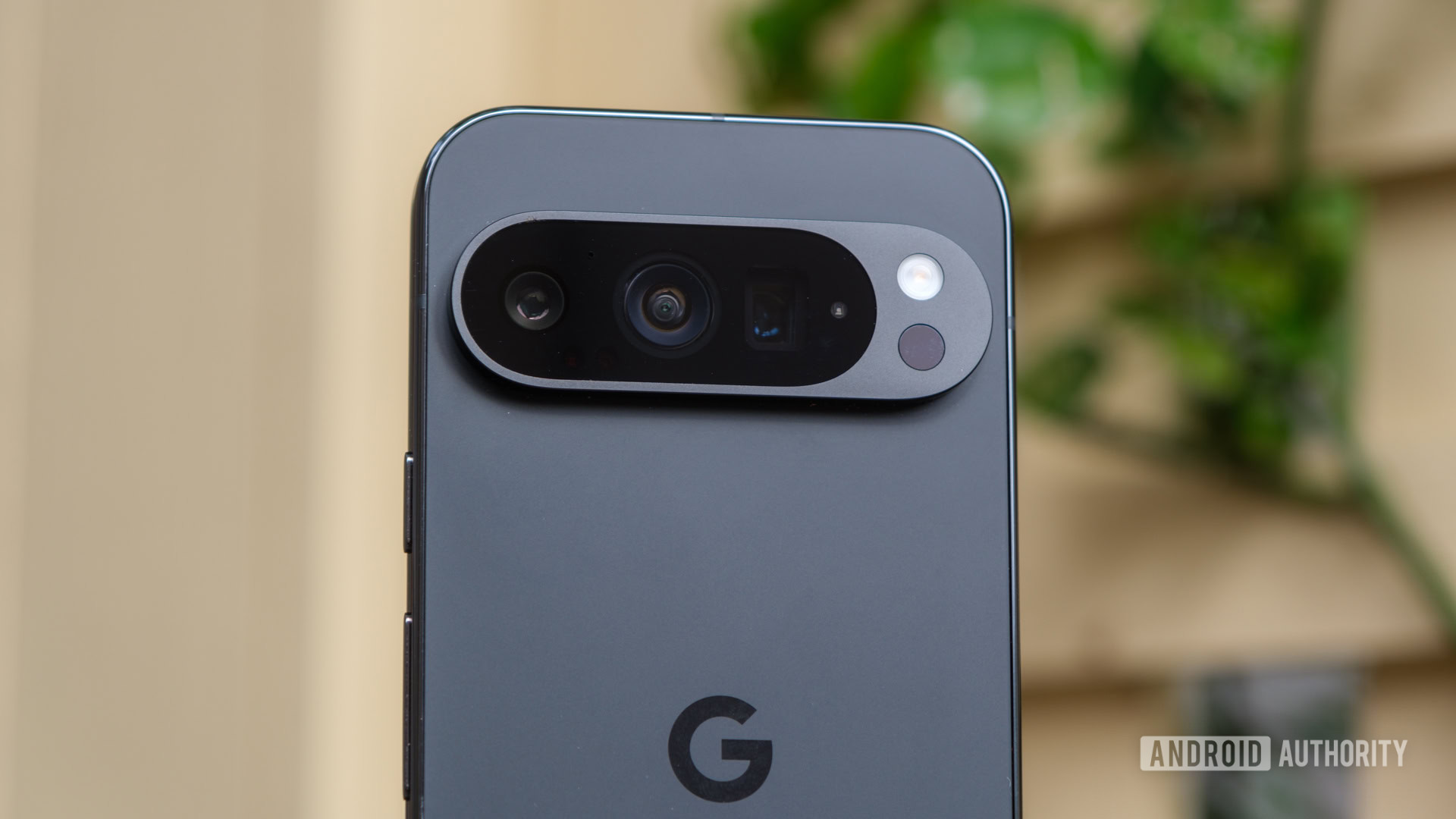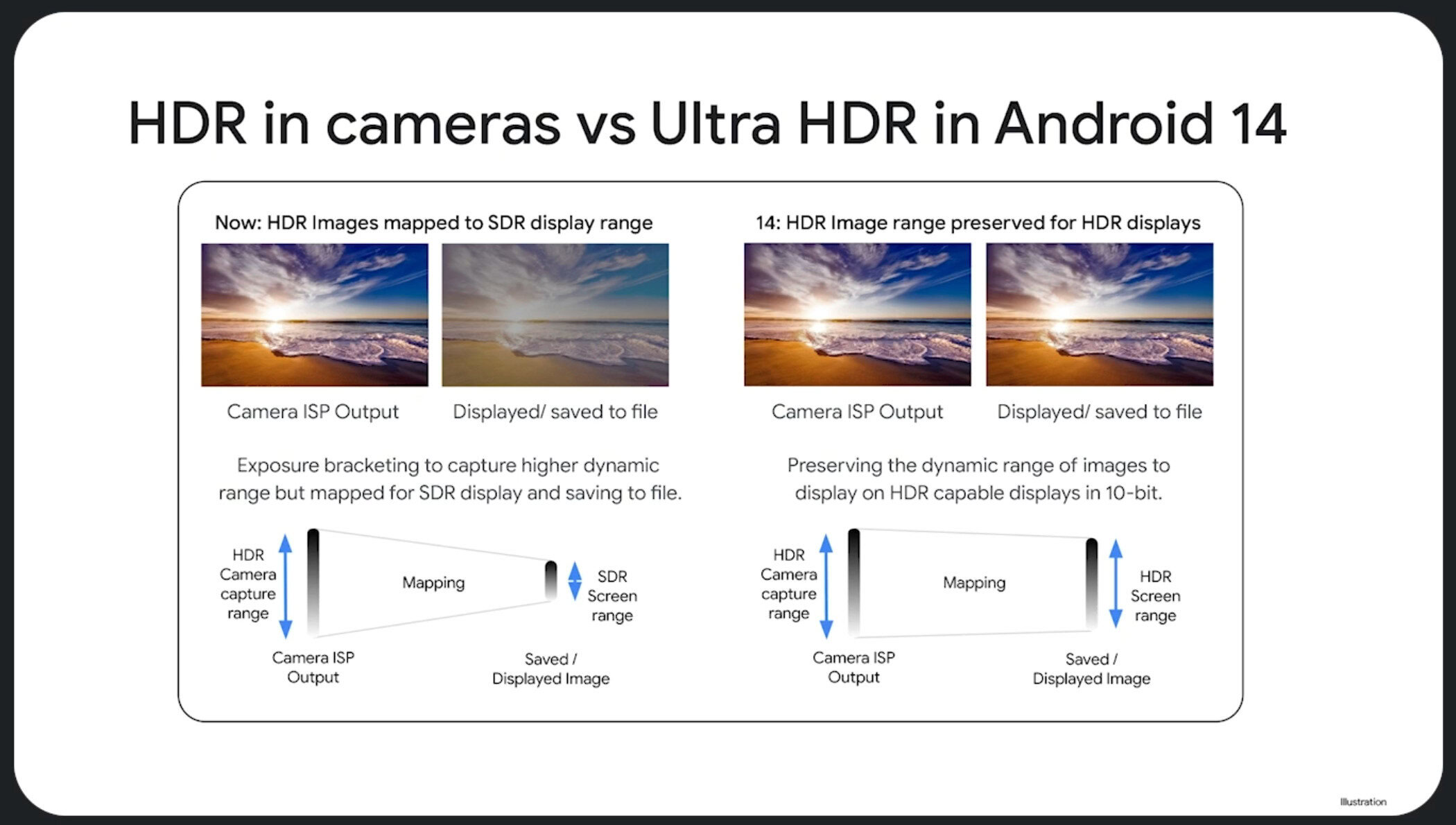Affiliate links on Android Authority may earn us a commission. Learn more.
Some Android 15 phones will be forced to shoot in Ultra HDR by default
Published onSeptember 10, 2024

- Devices that declare they meet performance class 15 will be required to support Ultra HDR for the main rear and front-facing cameras.
- This is outlined in the Compatibility Definition Document for Android 15.
- Performance class 15 is opt-in, though, and only some new, high-end devices will declare that they meet it.
One of the best features introduced in last year’s Android 14 update is Ultra HDR. It’s an image format made by Google that’s built on top of the nearly ubiquitous JPEG format. An Ultra HDR image is essentially just a JPEG file with some HDR metadata embedded in it so devices with HDR displays can see the HDR version of the picture while devices without HDR displays will only see the SDR version. The format solves the conundrum of displaying high-quality images on both modern and legacy devices, but the problem is that only a handful of the best Android phones capture photos in Ultra HDR. That could change soon, though.
With the release of Android 15 last week, Google published the latest iteration of the Android Compatibility Definition Document, or CDD for short. The CDD enumerates the requirements that “device implementations” (AKA the hardware and software of a device) must meet in order to be considered “compatible with Android.” Google created this document to ensure that OEMs create devices that ship with Android builds that don’t stray too far from each other in terms of system behavior and API availability. OEMs can choose to ignore the CDD and just modify AOSP as they please, of course, but if they want access to Google Mobile Services (GMS), then they have to play ball.
The Android 15 CDD contains some new provisions related to performance class, a standard first introduced with 2021’s Android 12 release. Performance class defines a set of device hardware and software capabilities that go beyond Android’s baseline requirements outlined in the CDD. The purpose of the performance class is to quickly provide a way for app developers to tell when a particular device is capable of certain high-performance tasks, such as supporting HDR video codecs, hardware-accelerated AV1 decoding, and more.
Every version of Android has its own corresponding performance class, so there’s a performance class for Android 12, Android 13, and Android 14. OEMs declare the specific performance class their devices meet by setting a system property that apps read from. For example, devices that launch with Android 12 and that meet the performance class 12 requirements can declare they support performance class 12. When those same devices upgrade to Android 13, their OEMs can continue to report that those devices support performance class 12 or declare they support performance class 13 if those devices meet the new requirements.

Although Google has yet to update its developer docs to list everything that will make up performance class 15, the Android 15 CDD mentions the new requirements. There are a lot of minor changes in performance class 15, but the most notable ones are mentioned in the following two bullet points:
- [7.5/H-1-18] MUST support JPEG_R for the primary rear and primary front cameras.
… - [7.5/H-1-20] MUST by default output JPEG_R for the primary rear and primary front cameras in the native camera app.
The “JPEG_R” you see there is the actual name for the Ultra HDR image format. The R stands for Recovery map, which refers to the HDR gain map that’s embedded in the JPEG file. Performance class 15 requires that devices not only support Ultra HDR for the main rear and front-facing cameras but also output images in Ultra HDR by default when capturing images from the main rear and front-facing cameras using the stock camera app. This is notable because it’s the first time we’ve seen Google require devices to support its new Ultra HDR image format.
However, since the requirement only applies to devices that declare performance class 15, many devices that launch with or upgrade to Android 15 won’t be forced to support Ultra HDR. This requirement will only apply to high-end devices running Android 15 that opt into the performance class standard. Thankfully, though, we’re seeing more and more OEMs adopt Ultra HDR without being required to do so, which is great because previously every OEM used their own proprietary HDR format. With Ultra HDR support becoming more popular, hopefully some third-party camera apps will roll out updates to enable Ultra HDR capture.
